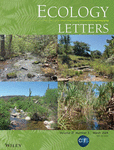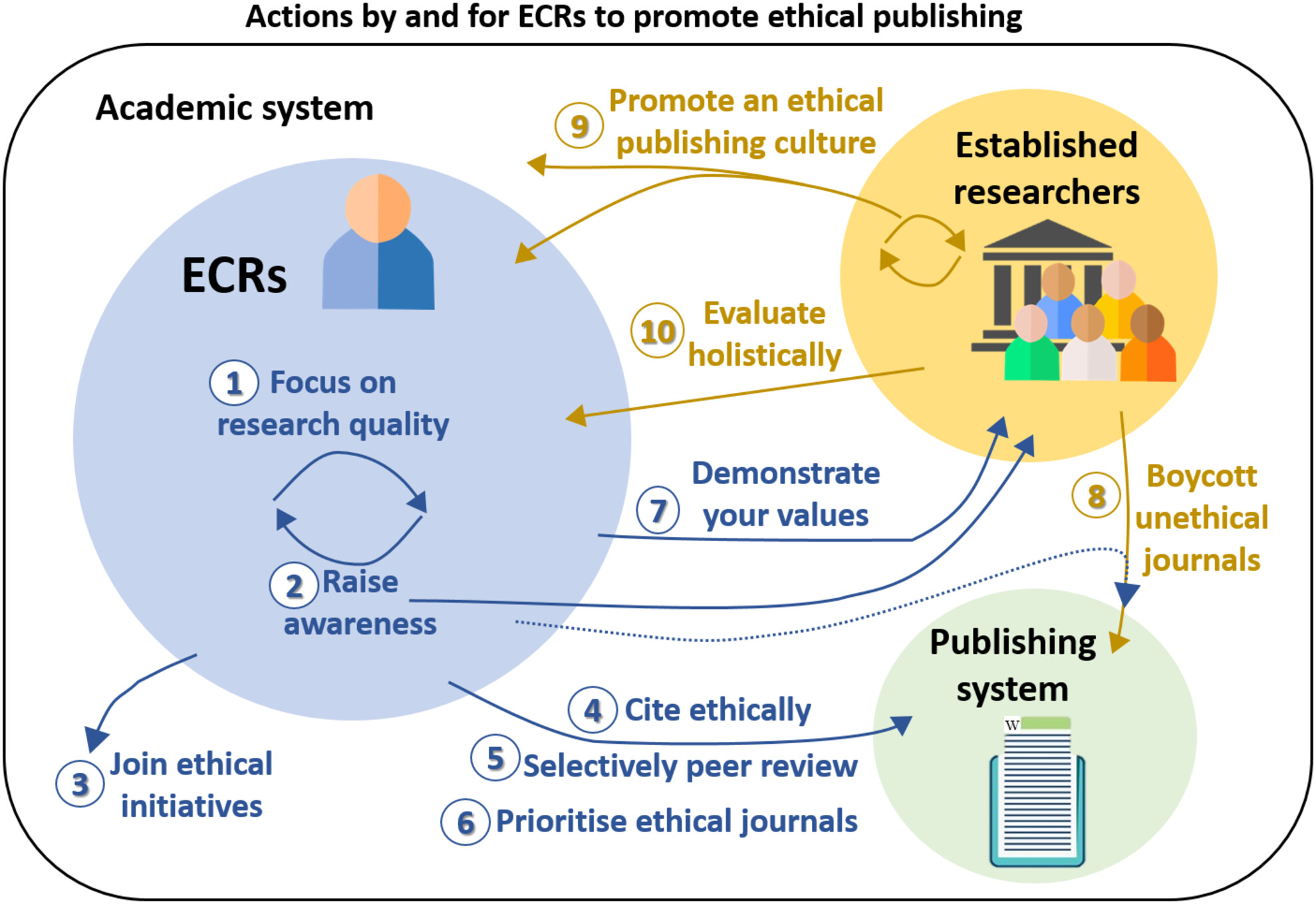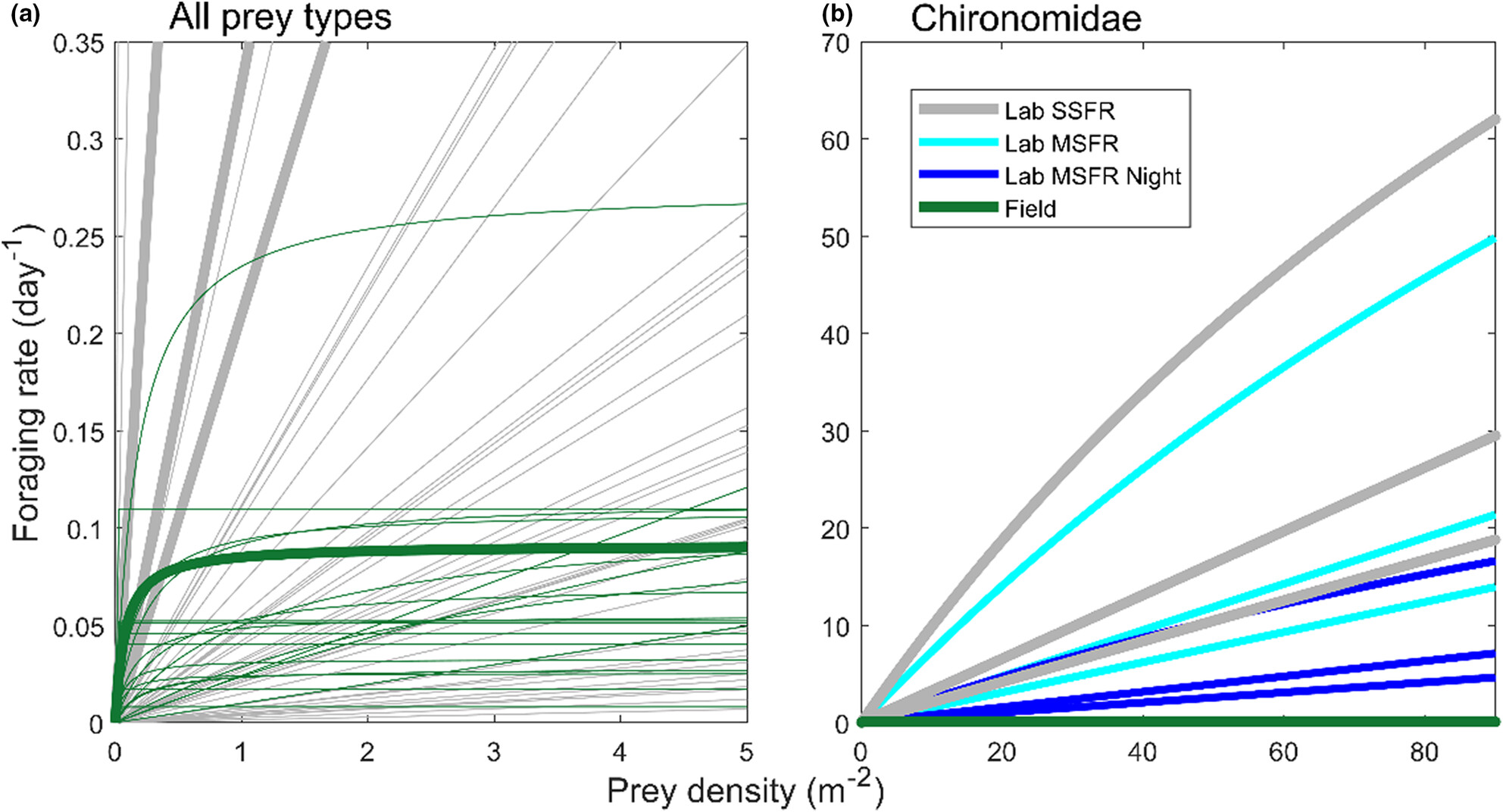Journal list menu
Export Citations
Download PDFs
FEATURED COVER
Cover Image, Volume 27, Issue 3
- First Published: 28 March 2024
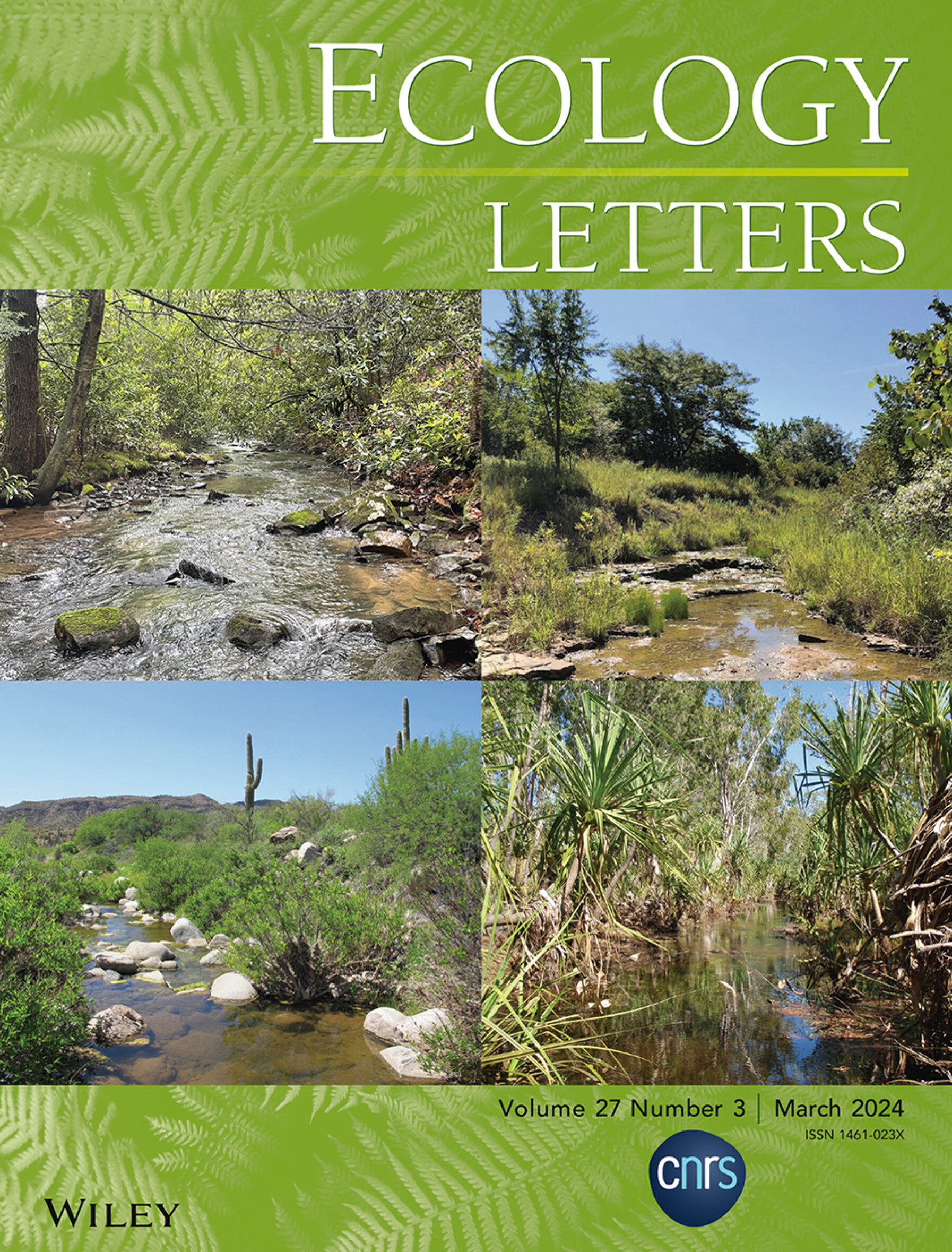
The cover image is based on the Synthesis Global patterns of allochthony in stream–riparian meta-ecosystems by Daniel C. Allen et al., https://doi.org/10.1111/ele.14401.
ISSUE INFORMATION
LETTERS
Genotype diversity enhances invasion resistance of native plants via soil biotic feedbacks
- First Published: 01 March 2024

We manipulated the genotypic diversity of an endemic species, Scirpus mariqueter, and evaluated the effects of abiotic versus biotic feedbacks on the performance of a global invader, Spartina alterniflora. We found that invader performance on live soils decreased non-additively with genotypic diversity of the native plant that trained the soils, but this reversed when soils were sterilized to eliminate feedbacks through soil biota. Our findings highlight the importance of plant-soil feedbacks in mediating the positive relationship between genotypic diversity and invasion resistance.
Arrive and wait: Inactive bacterial taxa contribute to perceived soil microbiome resilience after a multidecadal press disturbance
- First Published: 02 March 2024
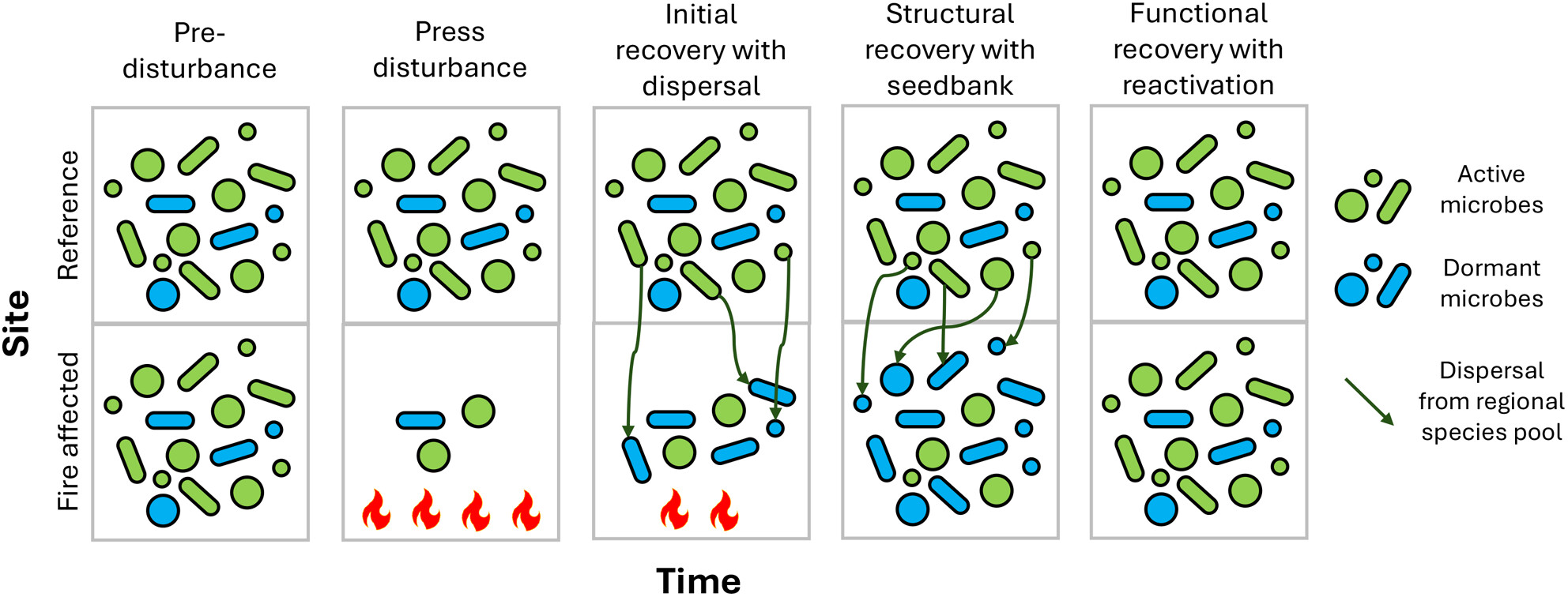
This study leverages a 7-year time series of a 60-year-old coal seam fire (Centralia, Pennsylvania, USA) to examine the resilience of soil bacterial microbiomes to a press disturbance. Using 16S rRNA and 16S rRNA gene amplicon sequencing, we assessed the interannual dynamics of the active subset and the ‘whole’ bacterial community. Contrary to our hypothesis, the whole communities demonstrated greater resilience than their active subsets, suggesting that inactive members contributed to overall perceived resilience. We provide evidence that these inactive members were dispersed to the disturbed sites but did not activate during our study, contributing to a site's resilience potential via the dormant pool.
VIEWPOINTS
How widespread use of generative AI for images and video can affect the environment and the science of ecology
- First Published: 02 March 2024
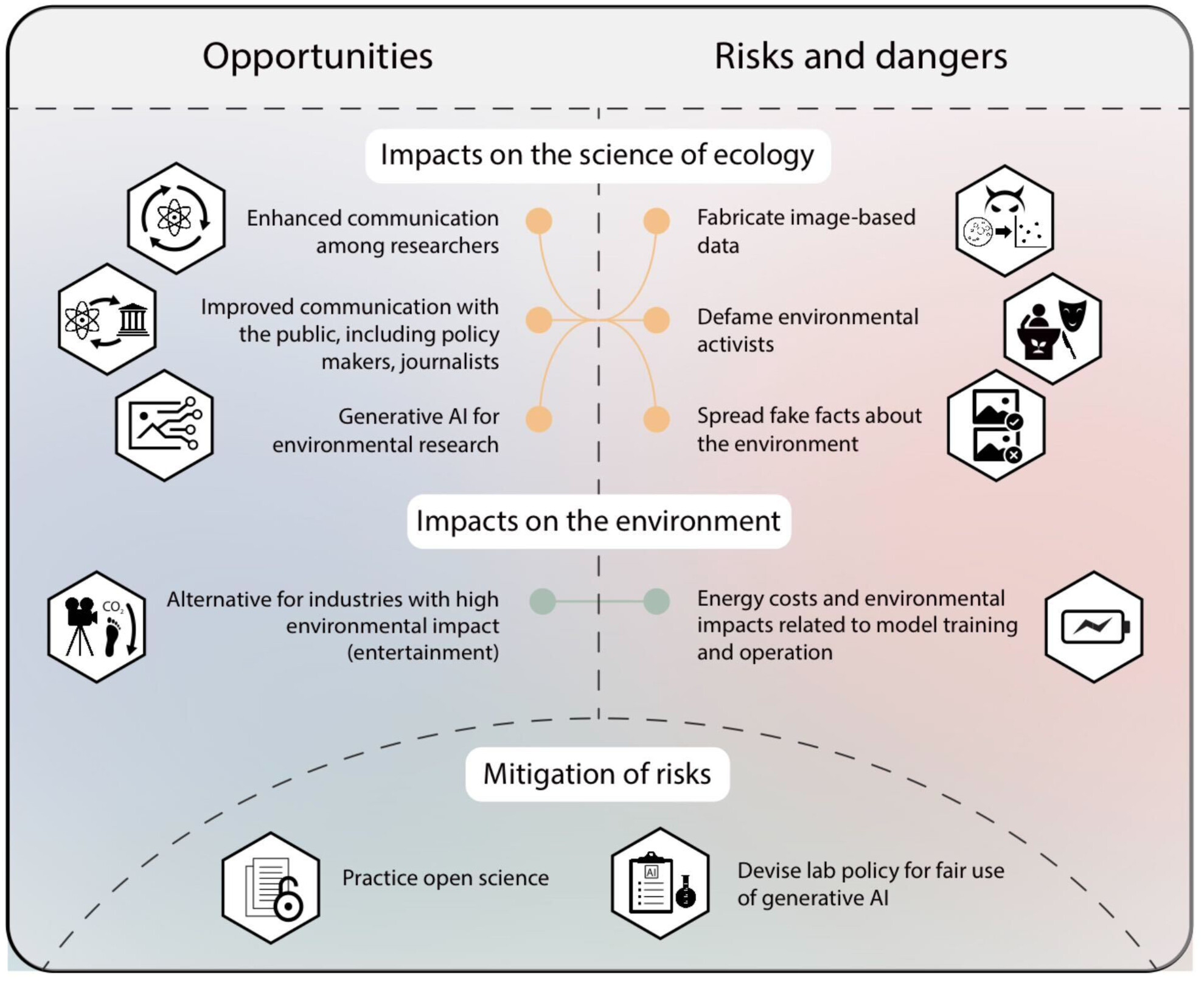
Generative artificial intelligence (AI) models will have broad impacts on society including the scientific enterprise; ecology and environmental science will be no exception. Here we discuss the potential opportunities and risks of advanced generative AI for visual material (images and video) for the science of ecology and the environment itself.
LETTERS
Intraspecific variability of leaf form and function across habitat types
- First Published: 08 March 2024
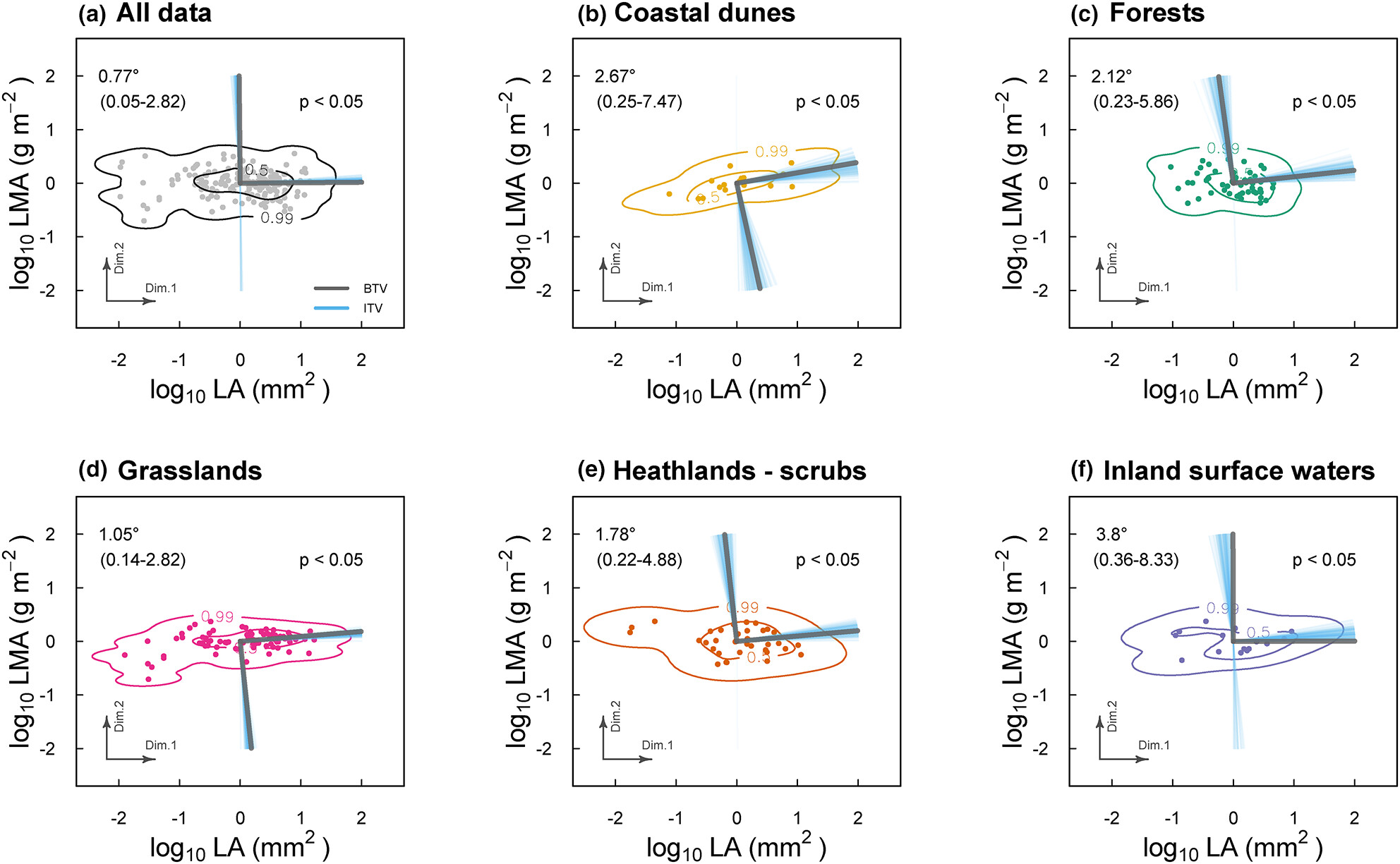
By using empirical data for two independent dimensions of leaf form and function and 167 species across five habitat types, we show that including intraspecific trait variability in a trait space: (i) rotates the axes of trait variation of the target trait space, (ii) increases the variance explained by these axes and (iii) modifies the functional structure of the trait space. However, these effects were rather small and strongly trait- and habitat-dependent.
VIEWPOINTS
David versus Goliath: Early career researchers in an unethical publishing system
- First Published: 11 March 2024
SYNTHESIS
Global patterns of allochthony in stream–riparian meta-ecosystems
- First Published: 11 March 2024
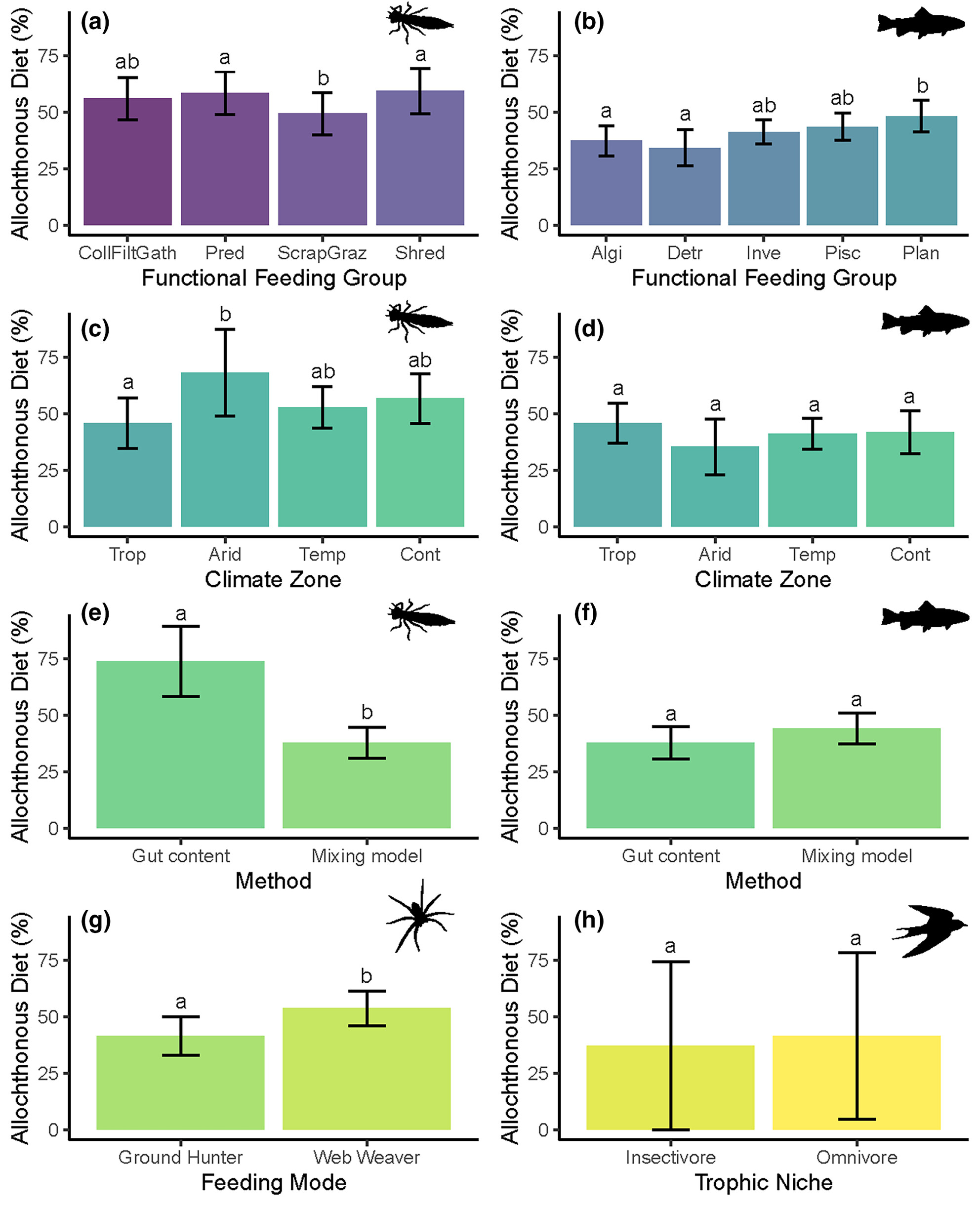
Here, we synthesize existing literature on stream–riparian meta-ecosystems to quantify global patterns of the amount of resource subsidy consumption by organisms, known as “allochthony.” Although both fish and stream invertebrates rely on seasonally pulsed allochthonous resources, we find allochthony varies seasonally only for fish, being nearly greater during the summer and fall than the winter and spring. We also find that consumer allochthony varies with feeding traits for aquatic invertebrates, fish, and terrestrial arthropods, but not for terrestrial vertebrates. Finally, we find that allochthony varies by climate for aquatic invertebrates, being nearly twice as great in arid climates than in tropical climates, but not for fish.
LETTERS
Nonrandom foraging and resource distributions affect the relationships between host density, contact rates and parasite transmission
- First Published: 13 March 2024

To investigate how host density, host behaviour and resource distributions influence host contact rates, and thus, disease dynamics, we combined empirical and theoretical approaches. We found that even simple optimal foraging behaviour greatly reduced host contact rates and parasite transmission relative to random movement assumptions. Furthermore, while other studies have shown that resource density can influence host density and contact rates, we here show that even when global resource density is held constant, resource distributions can impact disease dynamics.
Range expansion is both slower and more variable with rapid evolution across a spatial gradient in temperature
- First Published: 15 March 2024
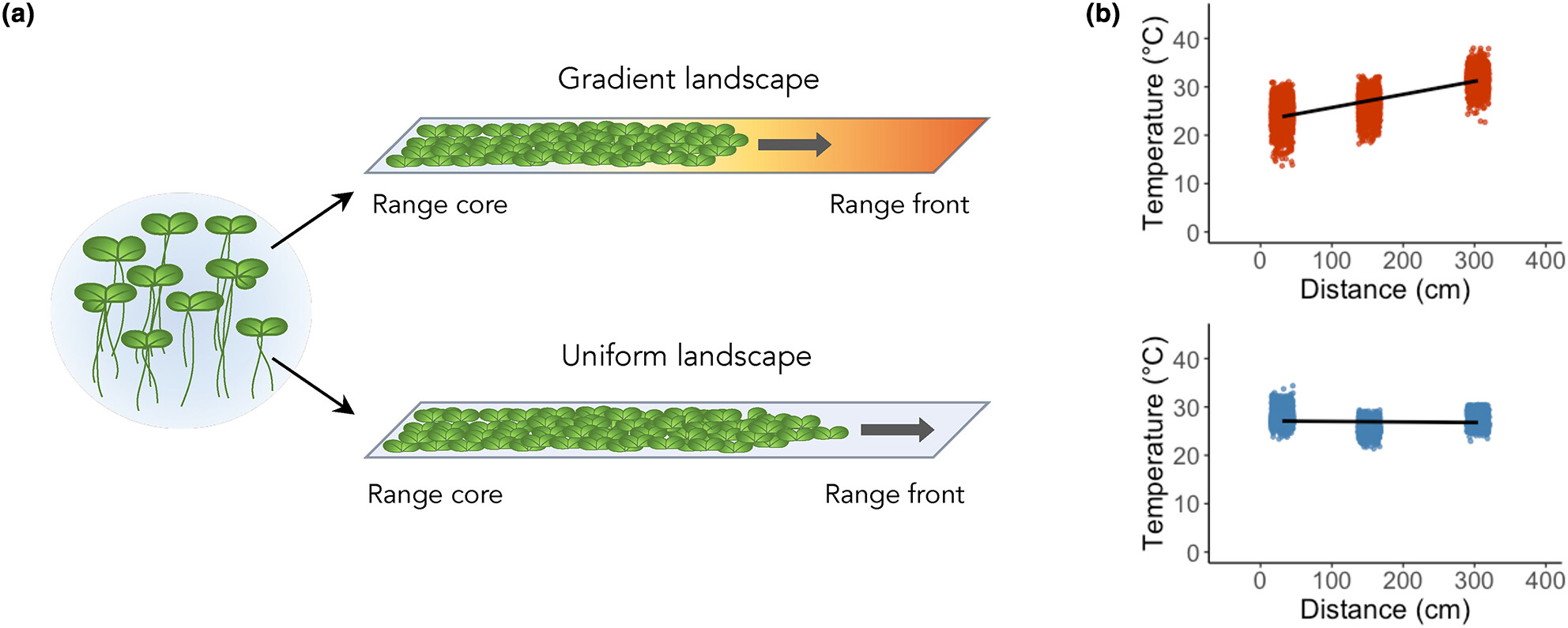
Using experimental evolution, we test how spatial gradients in temperature affect variability in the speed of replicate range expansions. Although the presence of a temperature gradient led to on average slower spread, higher range-front population densities, and genetic and trait data consistent with selection, we found that range expansion speeds were highly variable among replicates. Our results are contrary to current theory, and highlights difficulties in our ability to predict range expansion speeds in nature.
VIEWPOINTS
The importance of worldwide linguistic and cultural diversity for climate change resilience
- First Published: 22 March 2024
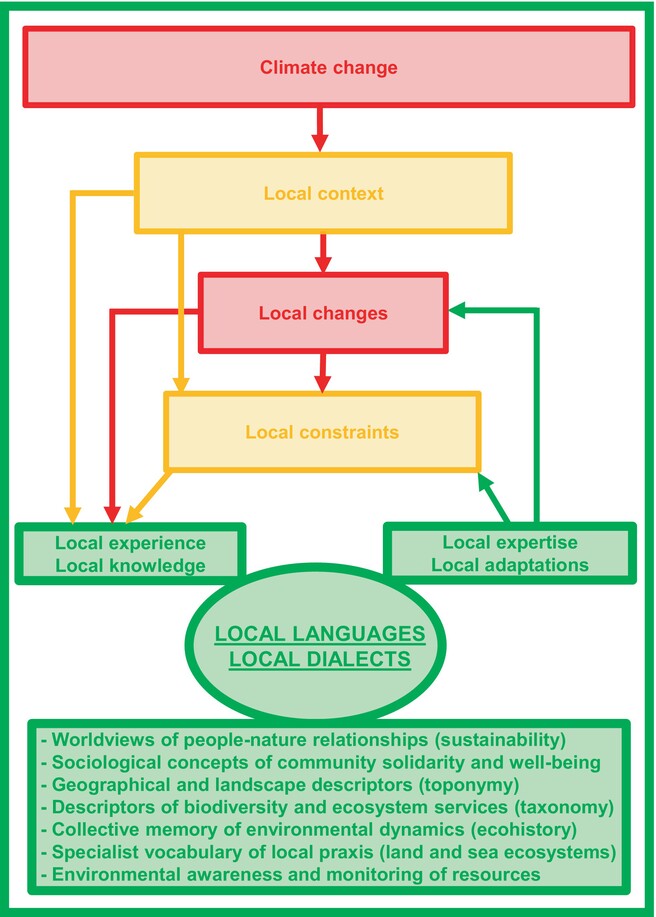
Local languages and dialects are essential for nurturing connections with the environment, facilitating early perception of environmental modifications, monitoring these modifications, and adapting local processes and practices of environmental protection and management to climate change resilience, sustainability and food security. Environmental emergency and climate change resilience should raise awareness on the need to promote the survival and development of minority languages and to take into account the creativity and expertise of minority languages in relation to their local cultures and environments.
LETTERS
Urban socioeconomic variation influences the ecology and evolution of trophic interactions
- First Published: 19 March 2024
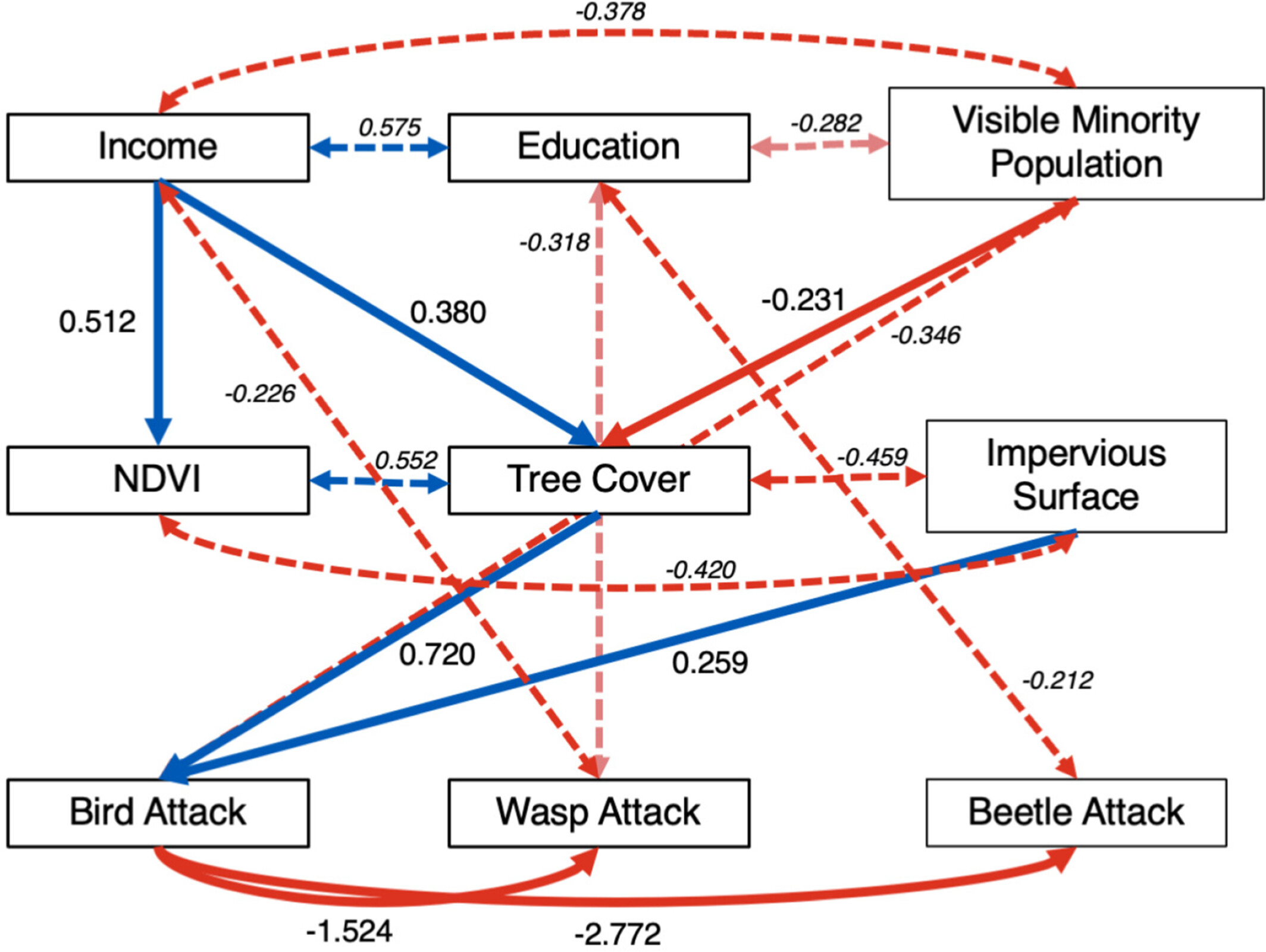
We tested how socioeconomic variation within cities corresponds with changes in trophic interactions and natural selection on prey phenotypes using the classic interaction between goldenrod gall flies (Eurosta solidaginis) and their natural enemies: birds, beetles, and parasitoid wasps. We show that socioeconomic variation in cities can have strong unintended consequences for the ecology and evolution of trophic interactions.
Intransitivity in plant–soil feedbacks is rare but is associated with multispecies coexistence
- First Published: 19 March 2024
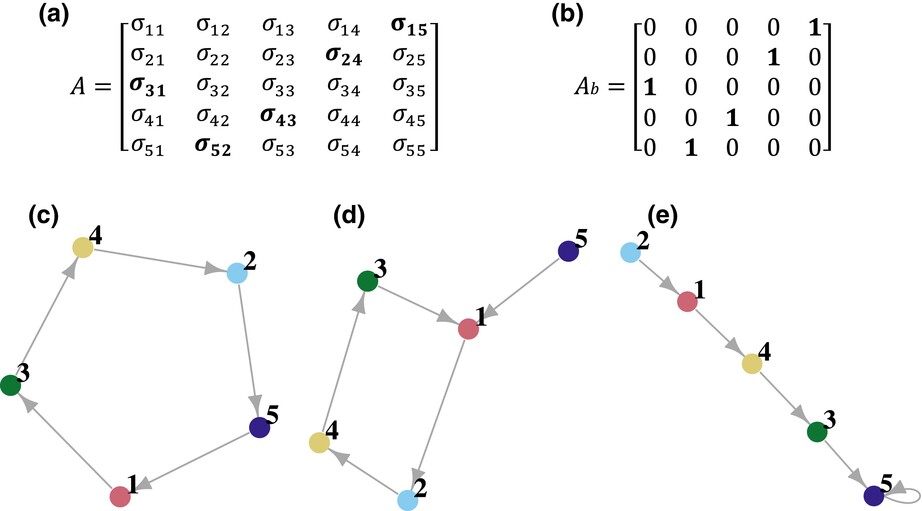
Plant–soil feedbacks (PSFs) impose similarly strong fitness differences and stabilizing-destabilizing forces, most often impeding species coexistence. At the community level, PSFs alone do not explain coexistence in species-rich communities. A topological analysis of the PSF interactions network shows that full intransitivity would be rare in the studied community, but is certainly required to guarantee species coexistence.
The plant root economics space in relation to nutrient limitation in Eurasian herbaceous plant communities
- First Published: 21 March 2024
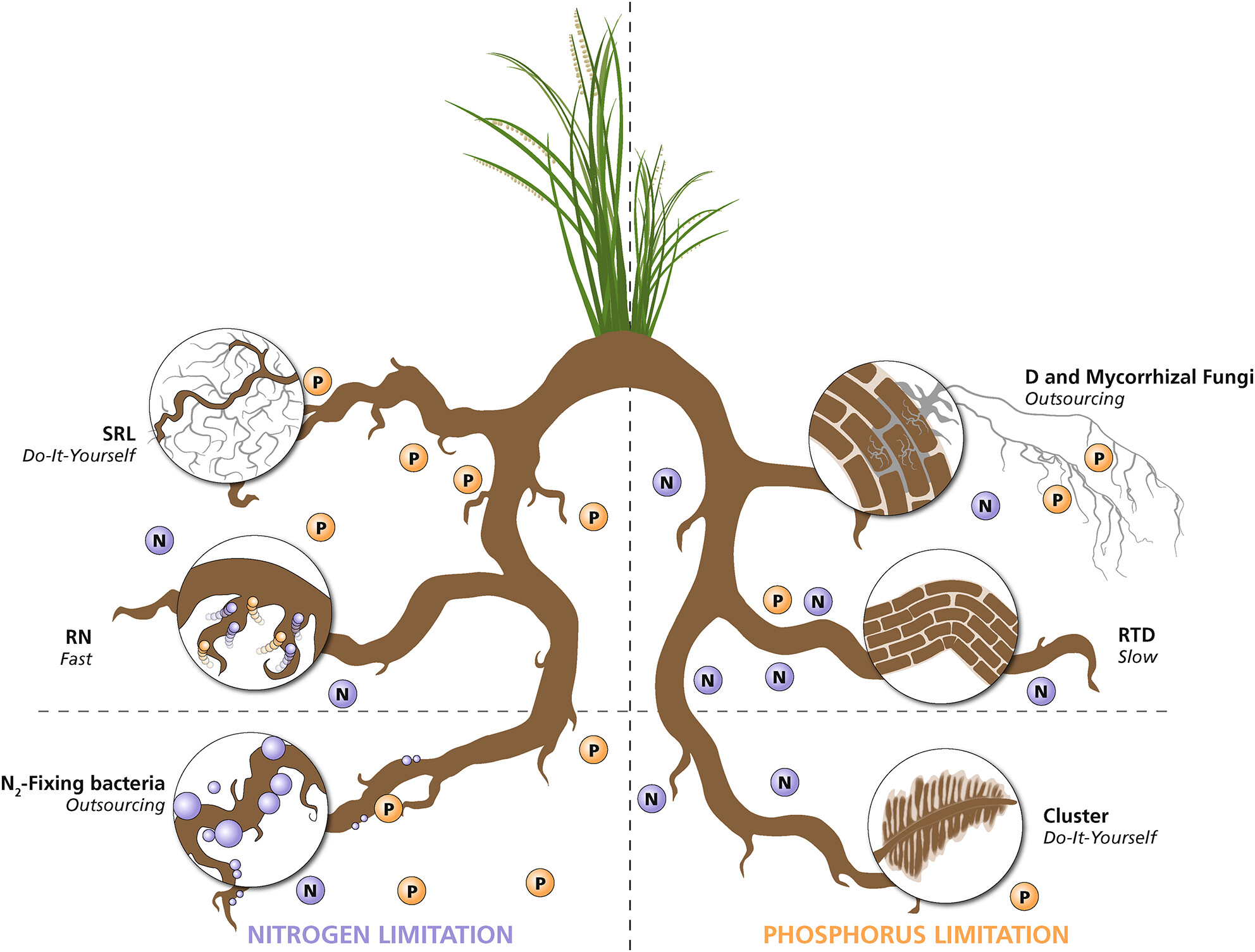
Plant species occupy distinct niches along a nitrogen-to-phosphorus (N:P) gradient, yet there is no general framework for belowground nutrient acquisition traits in relation to N or P limitation. Our results partly support the plant root economics space framework, but species' mycorrhizal capacity patterns conflicted with root economics space predictions. Further insight into belowground strategies along nutrient stoichiometry is crucial for understanding high abundance of threatened plant species under P limitation.
Foraging rates from metabarcoding: Predators have reduced functional responses in wild, diverse prey communities
- First Published: 21 March 2024
Behavioural plasticity compensates for adaptive loss of cricket song
- First Published: 22 March 2024
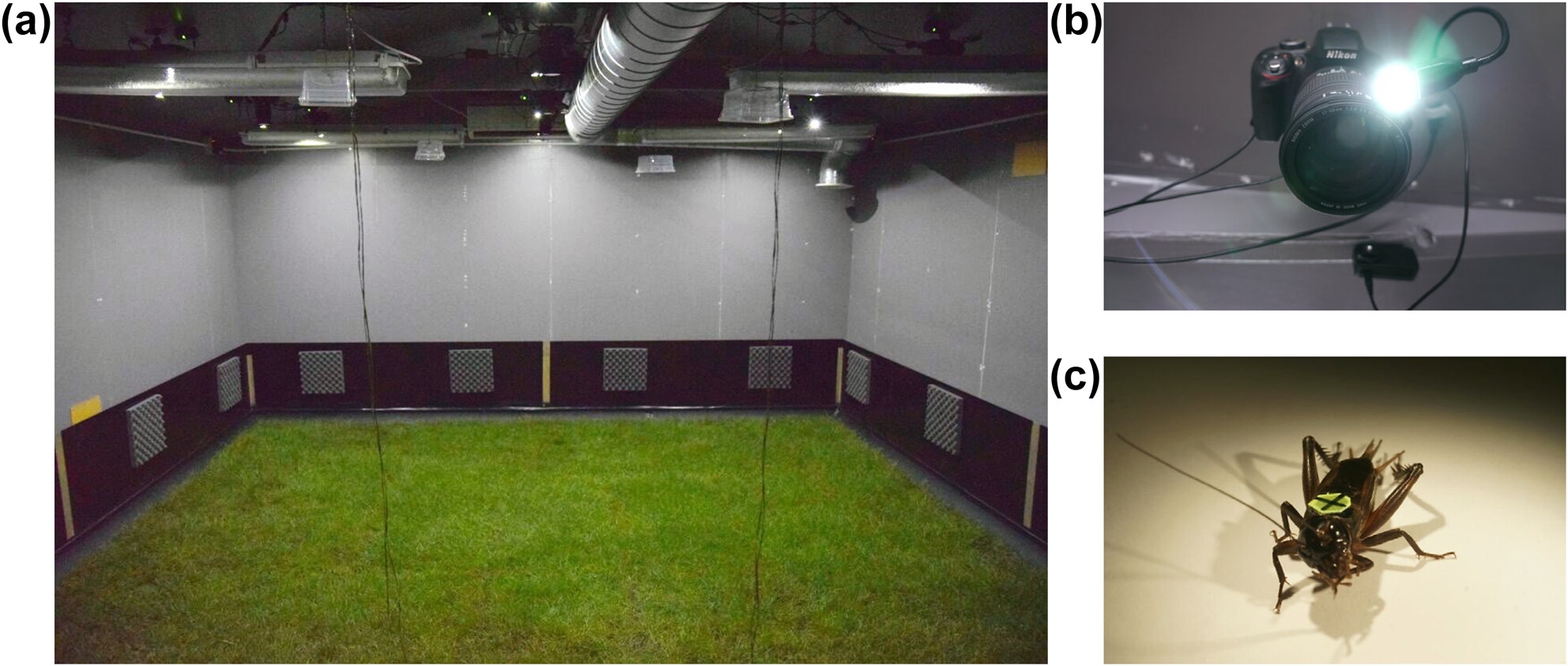
Behavioural flexibility might help animals cope with costs of evolutionary change, but it is very difficult to experimentally link behavioural flexibility to population-level fitness in a context relevant to wild populations. We developed a high-resolution, individual-based tracking system for low-light, naturalistic conditions to examine how the loss of acritical acoustic communication signal impacts offspring production and mating dynamics of a Hawaiian cricket population.
Rarity mediates species-specific responses of tropical reef fishes to protection
- First Published: 26 March 2024
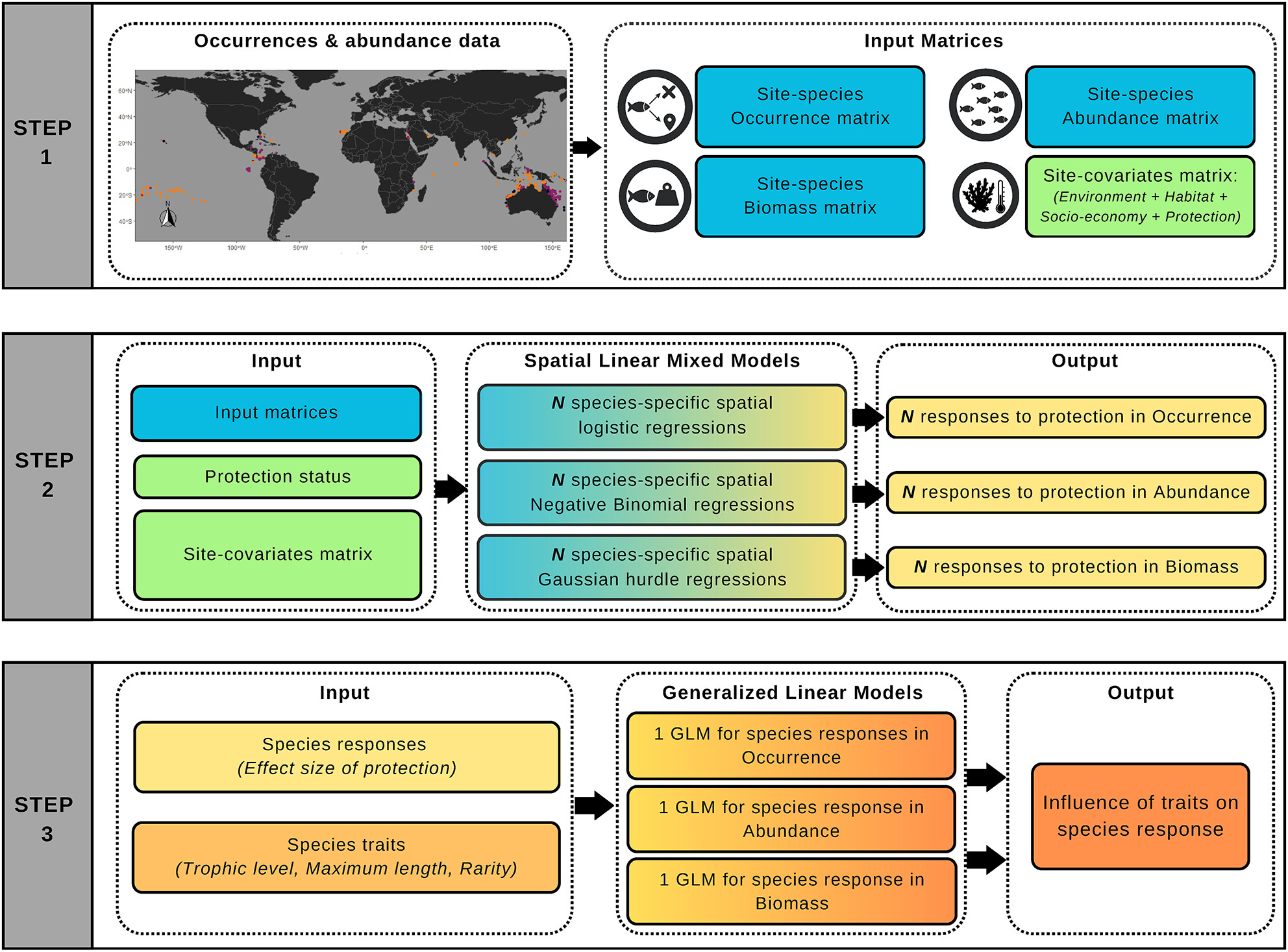
While controlling for the social-environmental context, we computed 658 species-specific models to extract the effect of high, medium and low protection of marine reef fish species. We found that nearly 40% of the species did not benefit from protection. We also found that the response was influenced by traits linked to vulnerability to fishing, and that rarity mediated this response through interactions.
SYNTHESIS
The natural history of luck: A synthesis study of structured population models
- First Published: 28 March 2024
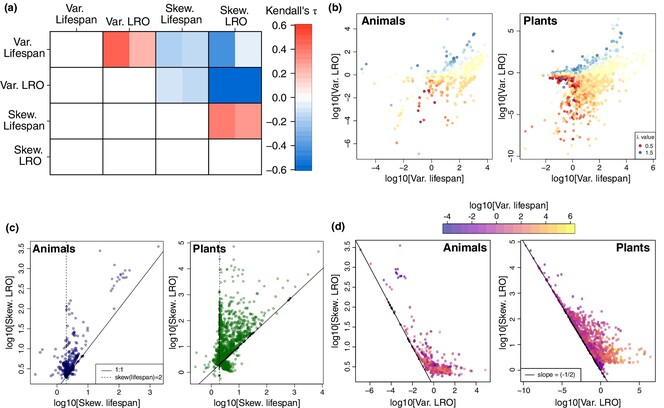
In this study, we explored patterns of luck across a diverse array of plant and animal species, by analysing variance and skewness in both lifespan and lifetime reproductive output (LRO), and relating these to life history traits. We found that variance in lifespan and variance in LRO were positively correlated across taxa, but that variance and skewness were negatively correlated for both lifespan and LRO. We found that survival luck and longevity had a strong influence on variance and skewness of both lifespan and LRO, and that variance in lifespan and LRO were both correlated with population growth rate.
Crop and landscape heterogeneity increase biodiversity in agricultural landscapes: A global review and meta-analysis
- First Published: 28 March 2024
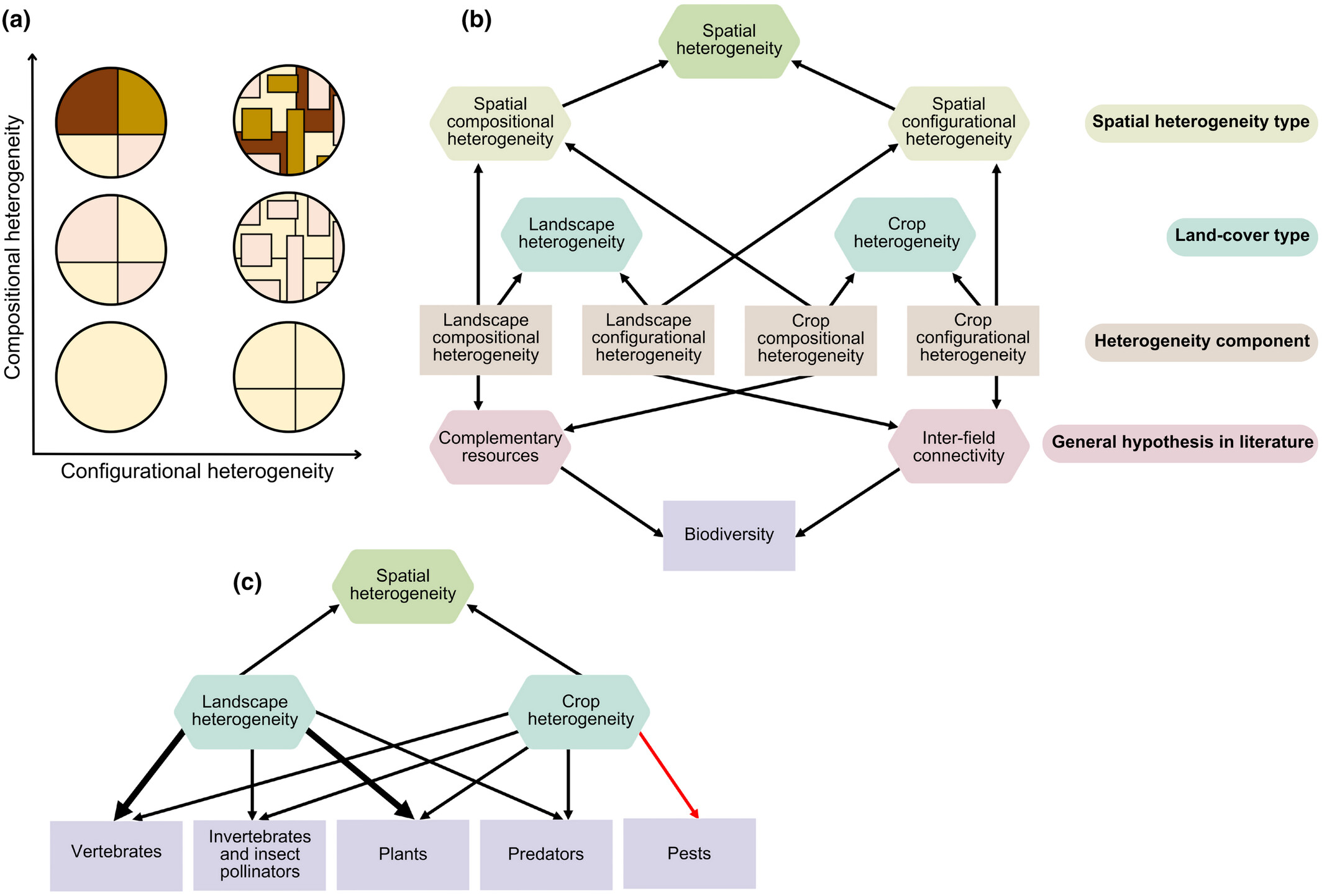
We demonstrate overall positive effects of crop and landscape compositional and configurational heterogeneity on alpha-level biodiversity (total abundance, species richness or Shannon diversity) for plants, invertebrates, vertebrates, pollinators and predators on a global scale. We also show that the positive effects of these heterogeneity components are consistent for invertebrates and vertebrates in both tropical/subtropical and temperate agroecosystems, and in annual and perennial cropping systems and at small to large spatial scales. These results suggest that small structural adjustments in compositional and configurational heterogeneity compatible with commercial farming systems (averaging 75% cropped area) can provide significant benefits for native biodiversity.
METHODS
Nonlinear life table response experiment analysis: Decomposing nonlinear and nonadditive population growth responses to changes in environmental drivers
- First Published: 28 March 2024

We extend a common tool for understanding population growth rate changes under different environmental conditions—the life table response experiment (LTRE)—to incorporate nonlinear and nonadditive relationships between growth rate and environmental drivers. Nearly all LTRE analyses rely on a linear approximation of population growth response to a changing driver and decompose this linear estimate of growth rate change into contributions from the individual underlying matrix elements or vital rates. We show that a second-order LTRE analysis outperforms the standard, linear approach under the majority of conditions across three demographic datasets and that the resulting second-order decomposition of growth rate changes helps to illuminate the underlying sources of nonlinearity and nonadditivity contributing to this improved accuracy.
LETTERS
Beyond a single temperature threshold: Applying a cumulative thermal stress framework to plant heat tolerance
- First Published: 28 March 2024
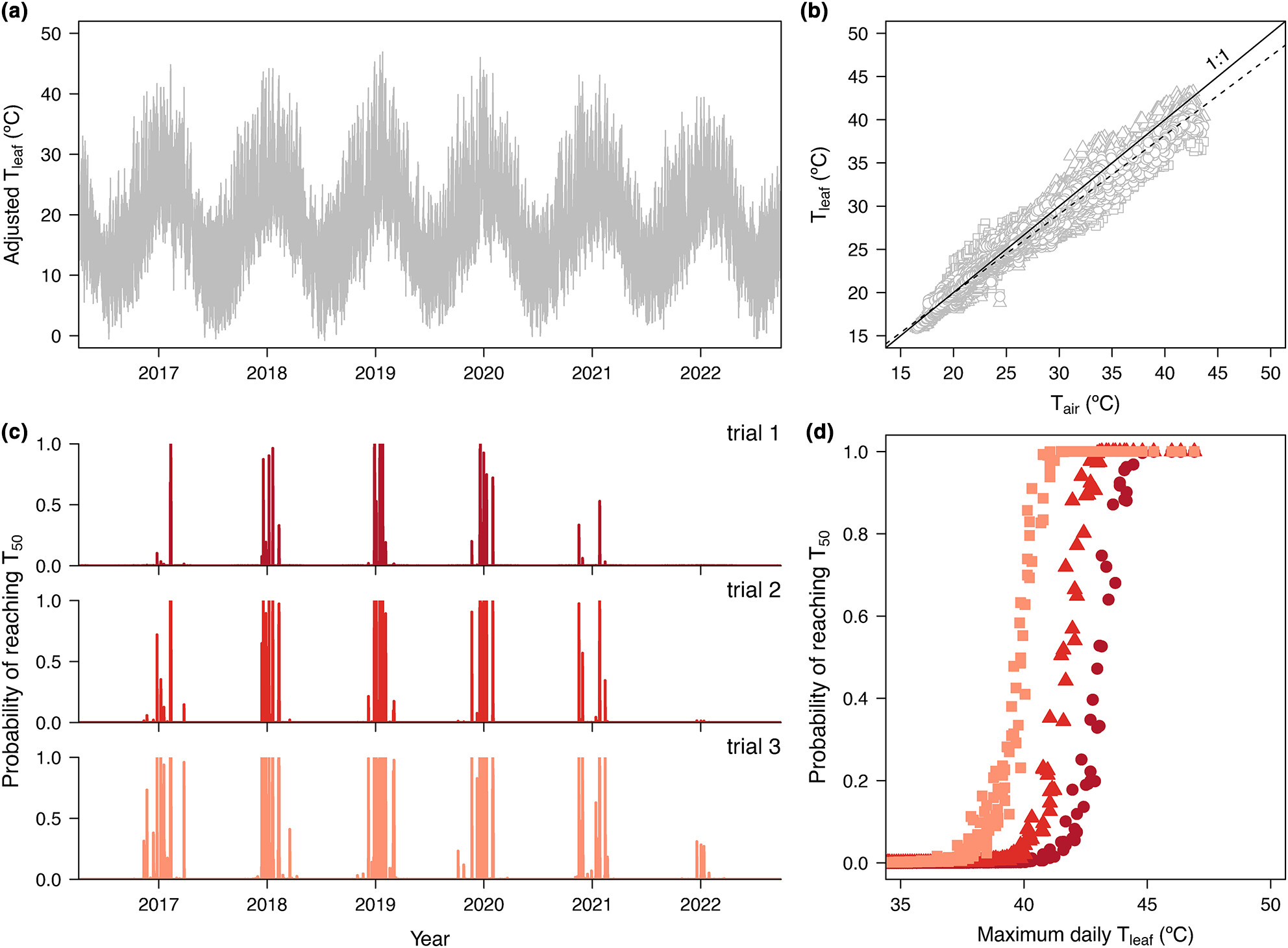
Plant thermal tolerance studies often focus on single critical thresholds, limiting the capacity to generalise across studies and effectively predict heat stress, whereas, in animals and microbial studies, the thermal tolerance landscape framework represents the more realistic, cumulative effects of temperature. We applied this in plants, measuring the decline in leaf photosynthetic efficiency (Fv/Fm) across multiple temperatures and exposure durations, and then using a dynamic model, we show how Fv/Fm curves can be applied to predict heat stress in plants under natural conditions. Utilising this approach in plants opens the prospect for meaningful predictive comparisons of thermal limits, not only among plants, but also across biological kingdoms.
Thermal limits of survival and reproduction depend on stress duration: A case study of Drosophila suzukii
- First Published: 28 March 2024
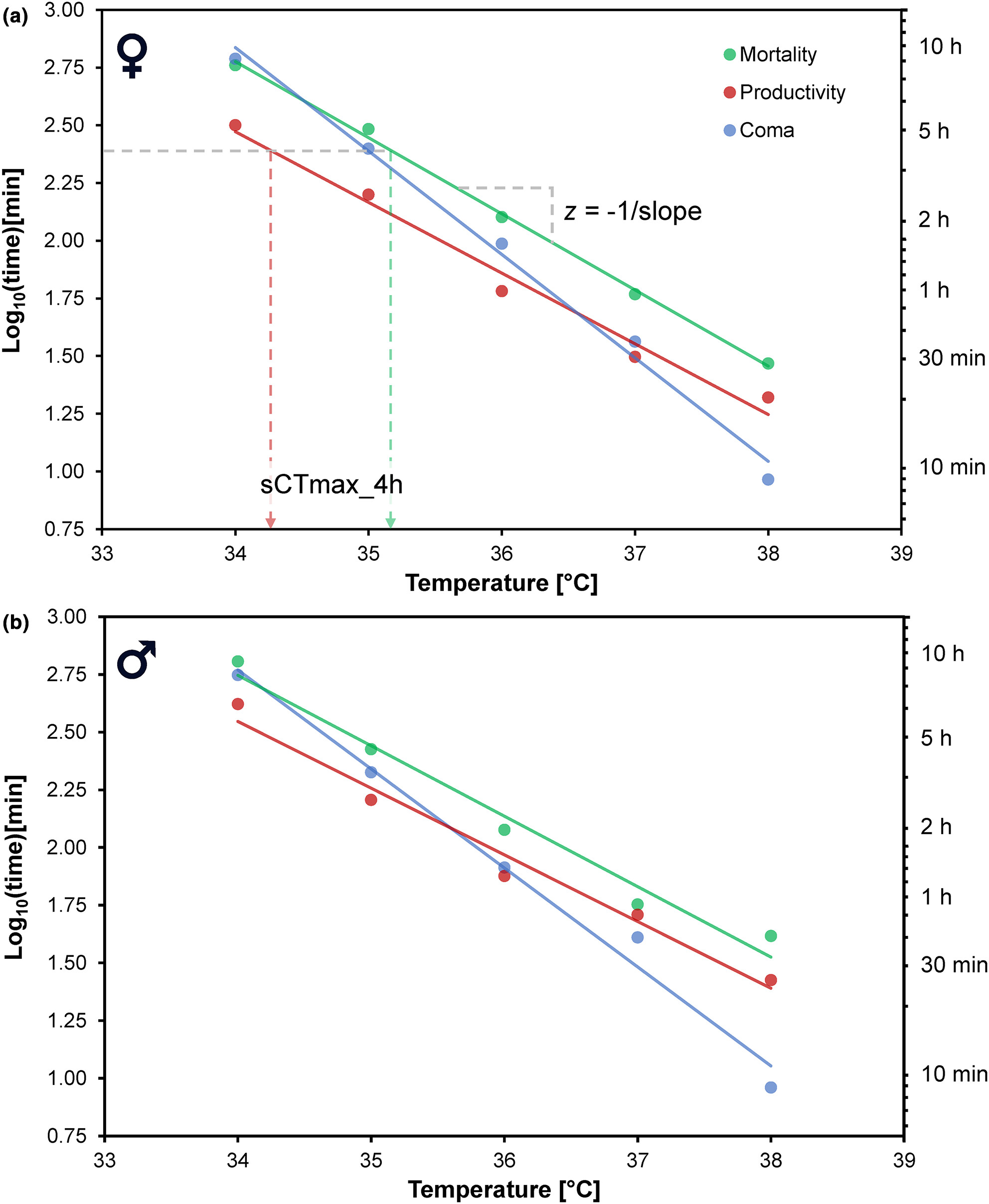
Thermal fertility limits may be better than lethal thermal limits in predicting ectotherm heat vulnerability and distributions. We show how heat-induced mortality and reduced reproductive output depend on both the intensity of heat stress and the duration of exposure, and how this relationship can be used to model accumulated heat stress under ecologically relevant field conditions.
PERSPECTIVE
Competition for time: Evidence for an overlooked, diversity-maintaining competitive mechanism
- First Published: 28 March 2024
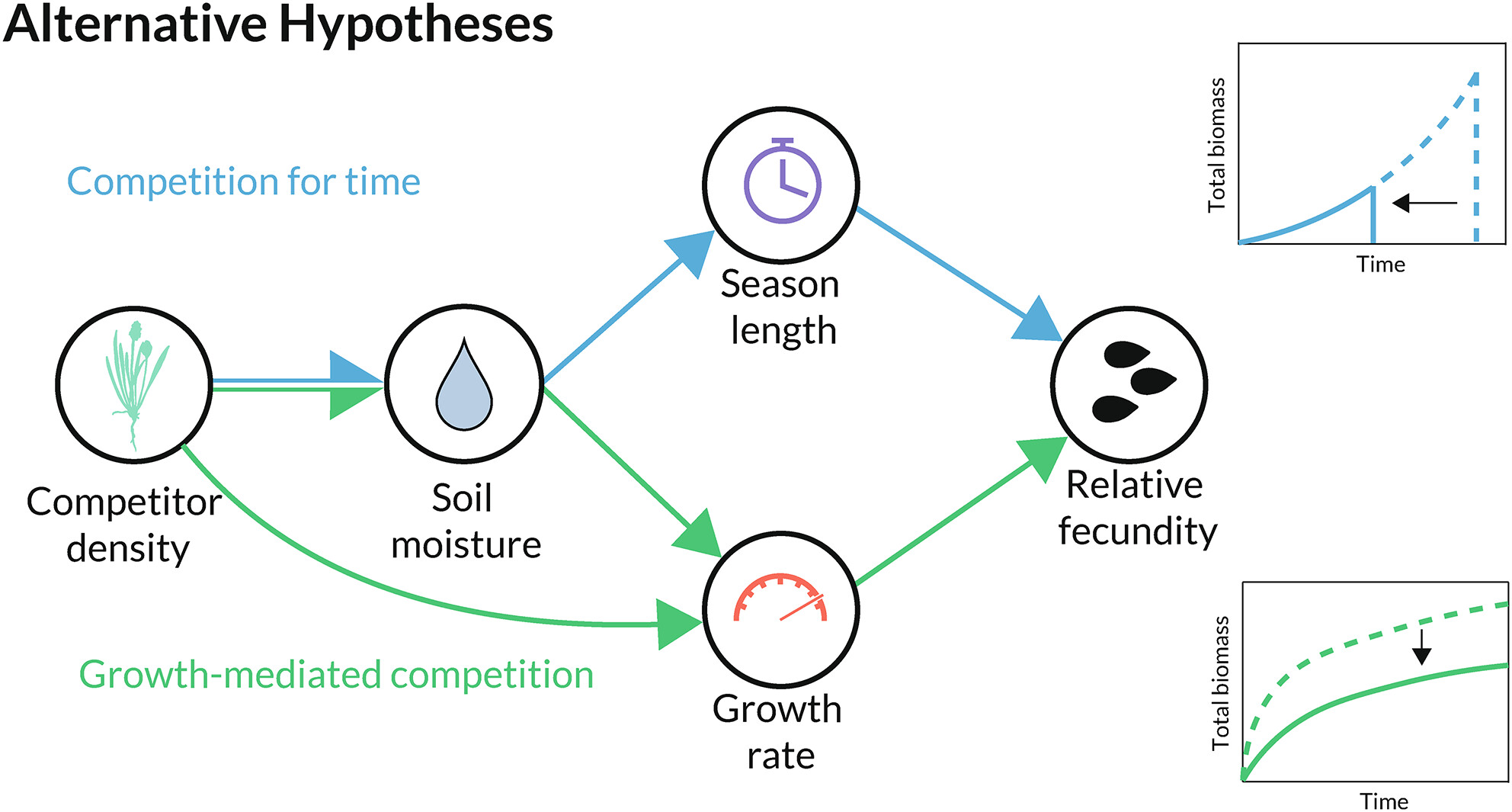
In ecology, there is an underappreciated but fundamental distinction between systems in which the depletion of limiting resources reduces the growth rates of competitors and systems in which resource depletion reduces the time available for competitors to grow, a mechanism we call ‘competition for time’. In this study, we introduce competition for time conceptually using a simple model of interacting species and perform an experiment to determine whether competition for time is an important competitive mechanism in a field system. Indeed, we find that species respond to increased competition through reductions in their lifespan rather than their rate of growth, suggesting competition for time may be overlooked as a mechanism of biodiversity maintenance.




